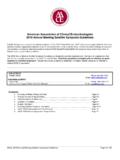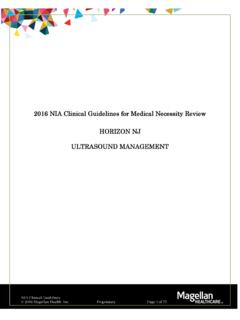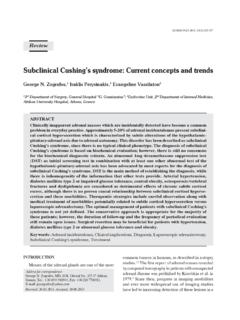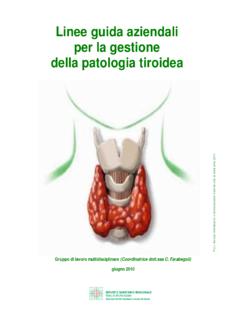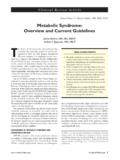Transcription of Management of Abnormal Uterine Bleeding in …
1 Management of Abnormal Uterine Bleeding in reproductive Period Evide nce-ba sed Go o d Clin ica l Pract ice Re c o mme ndat io ns fo r Indian women A Gynae Endocrine Society of India (GESI) initiative in collaboration with Endocrine Committee of Association of Obstetricians and Gynaecologists of Delhi Chairpersons: Dr. Alka Kriplani, Dr. Nutan Agarwal Coordinator: Dr. Prerna Gupta, Dr. Vidushi Kulshrestha, Dr. Sangeeta Gupta Experts: Dr. Atul Ganatra, Mumbai Dr. Bharati Dhorepatil, Pune Dr. Chandravati, Lucknow Dr. Deepti Goswami, New Delhi Dr. Dibyendu Banerjee, Kolkata Dr. Garima Kachhawa, New Delhi Dr. Hema Divakar, Bengaluru Dr. Hrishikesh Pai, Mumbai Dr. Jaishree Gajraj, Chennai Dr. Krishnendu Gupta, Kolkata Dr. Lila Vyas, Jaipur Dr. Mahesh Gupta, Ahmedabad Dr.
2 Manjula Anagani , Hyderabad Dr. Nalini Mishra, Raipur Dr. P Das Mahapatra, Kolkata Dr. Mahapatra, Cuttuck, Odisha Dr. Pratima Mittal, New Delhi Dr. Revati Janaki Ram, Madurai Dr. Rishma Pai, Mumbai Dr. Sadhana Gupta, Gorakhpur Dr. Sanjivni Khanna, New Delhi Dr. Sunesh Kumar, New Delhi Dr. Surender Mohan, New Delhi Dr. Suvarna, Khadilkar, Mumbai Dr. Vidya Bhatt, Bengaluru Dr. Vineet Mishra, Ahmedabad Dr. Vinita Das, Lucknow INTRODUCTION Abnormal Uterine Bleeding (AUB) is a common problem among women in the reproductive age. AUB may be accompanied by pain and discomfort, cause significant social embarrassment, and have a substantial effect on health-related quality of life. AUB leads to loss of productivity1 and may result in surgical interventions including hysterectomy2.
3 Management of such common condition in a population with wide healthcare diversity requires uniform clinical practice guidelines. A unified practice guidance, based on scientific evidence helps in standardizing clinical Management practices. There is a remarkable inconsistency in the Management of AUB in day to day clinical practice owing to lack of Good clinical Practice (GCP) guidelines for diagnosis and Management of AUB in India. Hence, there is an urgent need for the development of Indian guideline with recommendations on GCP to diagnose and manage AUB. EPIDEMIOLOGY& NOMENCLATURE OF AUB AUB is reported to occur in 9 to 14% women between menarche and menopause3. The prevalence varies in each country. In India, the reported prevalence of AUB is around Descriptive terms that have been used to characterize AUB patterns include menorrhagia, metrorrhagia, polymenorrhea, dysfunctional Uterine Bleeding and heavy menstrual Bleeding .
4 To standardize nomenclature of AUB, a new system known by the acronym PLAM-COEIN (Polyp; Adenomyosis; Leiomyoma; Malignancy and Hyperplasia; Coagulopathy; Ovulatory Disorders; Endometrial factors; Iatrogenic; and Not classified) was introduced in 2011 by the International Federation of Gynecology and Obstetrics (FIGO)5. However, the term amenorrhea , meaning absence of menstrual Bleeding during a 6-month reference period, is retained. The PALM-COEIN system is etio-pathogenesis based, with PALM describing structural causes and COEIN demoting non- structural causes of AUB. Table 1 summarizes the PALM-COEIN system of classification. Further, FIGO nomenclature summarizes the parameters for characterization of normal and Abnormal limits of menstruation (Table 2). Hence, FIGO nomenclature system will allow for standardization and uniformity while conducting future studies and can rectify the problem of inconsistency in AUB Management .
5 METHODOLOGY FOR FRAMING RECOMMENDATIONS A systemic review of literature was conducted to collect best evidence for the good clinical practice recommendations (GCPR). Existing guidelines, meta-analyses, cross sectional studies, systemic reviews, and key cited articles related to AUB were reviewed by a group of experts. The expert committee considered the recommendations from the existing guidelines NICE ( )6, ACOG (ACOG, 2013)7, SOGC, 20138, France 2010 9 and identified variability in the reproductive profile of Indian women compared to the western countries. This variability may probably be due to the differences in the racial, socioeconomic, and cultural background of Indian and Western populations. Therefore there is a need to formulate recommendations in the Indian context.
6 The draft recommendations were framed by the committee and discussed during an Expert Panel meeting held in September 2015. The Expert panel discussed the draft recommendations on the basis of the clinical evidences, from India and abroad, and framed the final version. Where evidence is limited, the panel relied on their vast experience and clinical judgement. Grading The current consensus guidelines have been developed in accordance with the American association of clinical endocrinologists (AACE) protocol for standardized production of clinical practice guidelines10. Recommendations are organized aetiology-wise, according to the PALM-COEIN system. They are based on clinical importance and graded (A, B, C, and D), coupled with four intuitive levels of evidence (1, 2, 3, and 4) based on the quality of supporting evidence (Table 3).
7 DIAGNOSIS OF AUB History and initial examinations Recommendations regarding obtaining patient history and performing initial examination: 1. It is suggested to abandon the old overlapping terminology and to use PALM-COEIN classification for the diagnosis AUB. (Grade A; Level 4). 2. It is recommended to obtain a thorough history and to conduct a physical examination to direct the need for further investigations and treatment (Grade A; Level 4). 3. It is recommended to obtain information about the concomitant use of any medications, which may likely be the cause AUB (Grade B; Level 4). 4. In patients with AUB, any of the following criteria should be considered a positive screen for coagulopathies (Grade B; Level 4): History of heavy Bleeding starting at menarche One of the following: o Postpartum haemorrhage o Surgery-related Bleeding o Bleeding associated with dental work At least two of the following symptoms: o At least one episode of bruising per month o At least one episode of epistaxis per month o Frequent gum Bleeding o Family history of Bleeding symptoms Examination: Including assessment of weight, pallor, thyroid, breasts, acne, hirsutism scoring (if present), abdominal, P/S and P/V examination.
8 (Grade A; Level 4). Investigations Laboratory Testing Recommendations on Laboratory testing 1. A complete blood count (CBC) is recommended for women with AUB. 2. It is recommended to perform a sensitive urine pregnancy test whenever indicated, or if pregnancy is suspected. 3. Bleeding time, platelet count, prothrombin time, and partial thromboplastin time are recommended in all adolescents and in adults with a positive screen for coagulopathies. Further testing for von Willebrand disease, ristocetin cofactor activity, factor VIII activity, and von Willebrand factor antigen is recommended in consultation with a hematologist. 4. TSH test is done when clinically indicated Imaging Recommendations on imaging 1. Ultrasonography is mandatory in AUB to evaluate uterus, adnexa and endometrial thickness (Grade A; Level 1) 2.
9 Doppler ultrasonography: In suspected arteriovenous malformation, malignancy cases and to differentiate between fibroid and adenomyomas (Grade B; Level 3) [upgraded as separate point] 3. 3D-USG:For evaluating intra myometrial lesion in selected patients for fibroid mapping (Grade B; Level 4) 4. SIS: If intracavitary lesion is suspected and hysteroscopy is not available (Grade A; Level 1) 5. Hysteroscopy: For diagnosis and characterization of intrauterine abnormalities (Grade A; Level 1) 6. MRI: To differentiate between fibroids and adenomyomas and for mapping exact location of fibroids while planning conservative surgery and prior to therapeutic embolization for fibroids (Grade A; Level 3). Endometrial Histopathology (HPE) Recommendations 1. Endometrial histopathology is recommended in AUB In women > 40 years (Grade A; Level 2).
10 In women < 40 years who have high risk factors for carcinoma endometrium such as irregular Bleeding , obesity associated with hypertension, PCOS, diabetes, endometrial thickness > 12 mm, family history of malignancy of ovary/breast/endometrium/colon, use of tamoxifen for HRT or breast cancer, late menopause, HNPCC, AIB unresponsive to medical treatment (Grade A; Level 2) 2. Endometrial aspiration should be the preferred procedure for obtaining endometrial sample for histopathology. If endometrium is thick om imaging, but where HPE is inadequate or atrophic, hysteroscopy should be performed to rule out polyps (Grade A; Level 2). 3. Dilatation and curettage should not be the procedure of choice for endometrial assessment (Grade A; Level 3). Common symptoms and imaging features of Abnormal Uterine Bleeding aetiologies are presented in Table 4.

